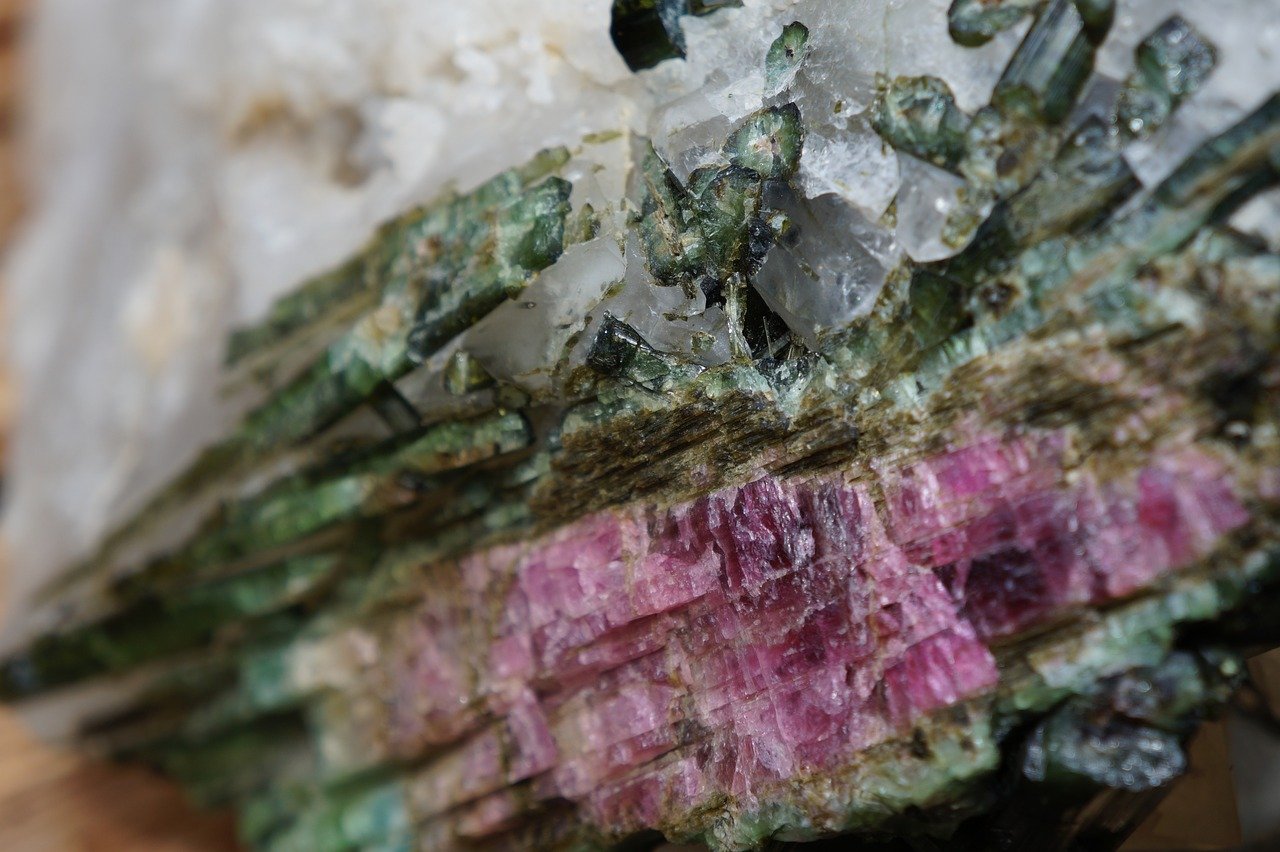


Tourmaline is a mineral supergroup that consists of three groups, multiple subgroups, and over thirty different species. With new discoveries, the list of tourmaline species continues to grow. They all have the same trigonal (hexagonal) crystal structure but different chemical formulas.
Along with the beauty that Tourmaline Birthstone has and is known for, it also has many healing properties. Different colored Tourmaline is known to heal different ailments. Some of the cure it provides according to different color are as follows-
Brown Tourmaline- This is believed to help in overcoming the bad habits a person possesses and enables them to move forward from failures and weaknesses.
Black Tourmaline- This is known to reduce stress and anxiety.
Blue Tourmaline- This promotes a person’s spiritual growth and intuition.
Pink Tourmaline- This color gemstone helps in reducing all kinds of fear and panic. It makes a person compassionate.
Green Tourmaline- This helps to increase stamina and enables a person to overcome jealousy.
Watermelon Tourmaline- This increases the person’s self-esteem and self-worth.

Tourmaline is a revered stone that comes in a wide array of colors. This grounding gemstone is popular for energetic protection and balance. Since ancient times, natural Tourmaline stone has been used by saints and healers for gaining protection and relief from physical and mental ailments. Even today, it is believed that Tourmaline metaphysical properties cure the wearer on all grounds including physical, mental, emotional, and spiritual
Tourmaline Gemstone deposits are found in Ceylon in Sri Lanka, Pakistan, Myanmar, Afghanistan, the United States of America, and Russia. Other countries like Nigeria, Malawi, Madagascar, Tanzania, Namibia, and Mozambique have been the producers of Tourmaline recently.

Natural Tourmaline Stone is available in extremely varied colors. Some of the colors in which Tourmaline is available are blue, green, brown, red, pink, black, and grey. They are also available in orange, purple, and white colors. Some of them are even colorless. Some are multicolored accommodating two or more different colors. Some hue in Tourmaline is enhanced by using heat treatment.
Light pink stones are turned colorless
Brownish red stones are changed to red color
Greenish stones are made to deep green color.

If you are tired of going through your daily life, get yourself a Tourmaline gemstone. It is a unique gift from Mother Nature that possesses countless benefits to an individual's heart, mind, body, and soul. Read on and learn more about these healing properties.
Cleansing the Tourmaline is undoubtedly the best way to show your care for the stone. Indeed, it is suitable for all gemstones. There is a saying that if you treat the gemstone right, it'll do the same. As for Tourmaline, all it needs from you is constant care and affection.
This stone, as colorful as it gets, can be very absorbent as stone. When the stones suck negative energy, they tend to get dirty. Just like us, they deserve to be taken care of.
The most popular tourmaline varieties range from rich reds, pinks and peach colors, to emerald greens and yellows, to blues and violets. Black and brown tourmalines are also used in jewelry. “Parti-colored” tourmalines exhibit two or more colors in a single gem, such as watermelon and liddicoatite tourmaline. “Bicolor” tourmaline displays two distinct color zones. Paraíba tourmaline, named after the place where it was first found in Brazil, is a trade term for vividly saturated green to blue or violet copper-bearing elbaite tourmaline. Rubellite refers to pink to red elbaite tourmaline. Indicolite refers to the blue variety. Chrome tourmaline is a trade term for vibrant green tourmaline
Tourmaline gemstones can be cut into many shapes and sizes, often as faceted gems, cabochons, polished crystal slices or mineral specimens. Cutters often fashion tourmalines as long rectangles.
The absence or presence of inclusions, blemishes, and other imperfections within the stone, which affect its transparency and overall appearance.
The weight of the stone, measured in carats, which determines the size of the stone.